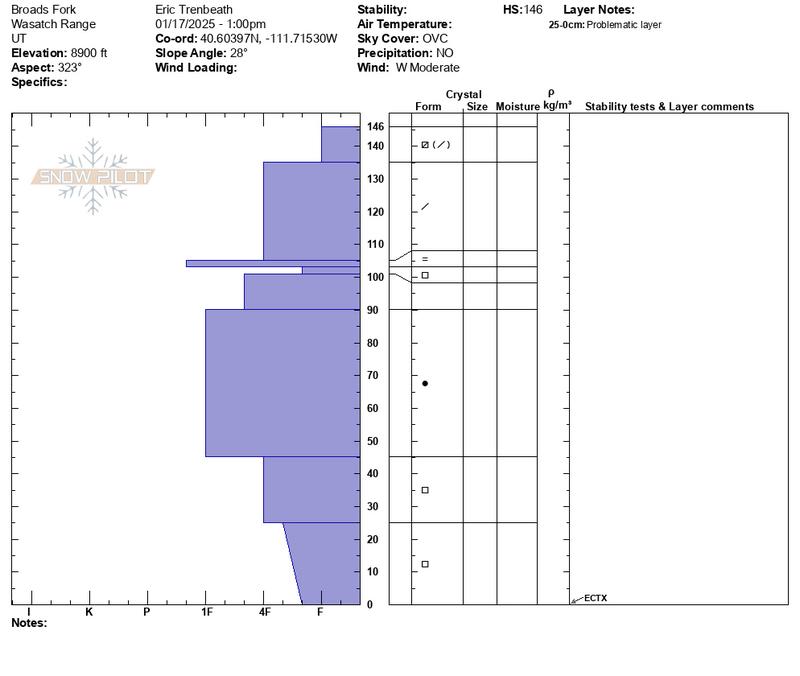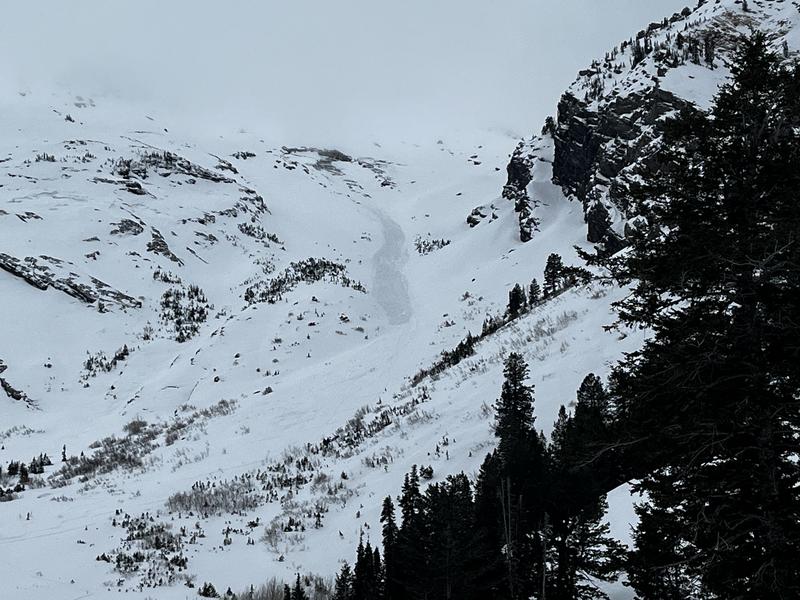Observation Date
1/17/2025
Observer Name
Trenbeath, White
Region
Salt Lake » Big Cottonwood Canyon » Broads Fork » Blue Ice
Location Name or Route
Broads Fork
Comments

I've been observing the Wasatch snowpack history from afar and this was my first day out in the field up here. It's my impression that the PWL presents the greatest danger on steep northerly aspects where the snowpack is right around 100 cms or less. Terrain also seems to play a significant roll. In addition to steepness, a certain amount of "scrappyness" or complexity seems to be a contributing factor as well. Steep, rocky slopes with convex features, or even sparse trees seem the most likely areas to trigger an avalanche. Broad, planar slopes, especially those with a deeper snowpack seem less likely. It is, however, a bit like rolling the dice. For our part, we continued to avoid slopes much more than 30 degrees.

Fresh glide avalanche in Bonkers.
Today's Observed Danger Rating
Moderate
Tomorrows Estimated Danger Rating
Moderate
Coordinates






